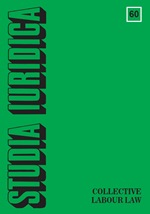The Representative Function of Trade Unions
The Representative Function of Trade Unions
Author(s): Jakub StelinaSubject(s): Law, Constitution, Jurisprudence
Published by: Wydawnictwa Uniwersytetu Warszawskiego
Keywords: workers representation; trade union; works’ council; non-trade union representation; representative function
Summary/Abstract: The author presents an analysis of the position of trade unions as the most popular worker representation. Among all types of worker representations operating in the modern world, trade unions keep playing a special role. Three basic functions of trade unions are the protective, control and representative ones. However, the growing role of the non-trade union forms of collective protection of the working class certainly results in changes of the status of trade unions. We can observe a weakening of the position of trade unions. Three types of worker representation can be identified in Poland: trade union, all-workforce (all-company) and general professional representations (in particular works councils). At the supra-company level there exists, in fact, trade union monopoly. At the company level, Polish legal solutions fall among the double-channel representation, a model based on equal rights of trade union/non-trade union representation. Hence in some cases domination and preference (monopoly) of trade unions can be observed. The co-existence of various types of worker representation raises a question about the model of collective representation. Trade unions have lost their monopolistic position in the representation of the working class. At the moment, further ways of development of industrial relations within the area in question are hard to predict. The questions that would have to be answered include a number of issues, like whether the channel of representation should be a single or double one, whether powers of non-trade union representations should be actually further extended or the current position of trade unions at work establishments maintained.
Journal: Studia Iuridica
- Issue Year: 2015
- Issue No: 60
- Page Range: 223-236
- Page Count: 14

